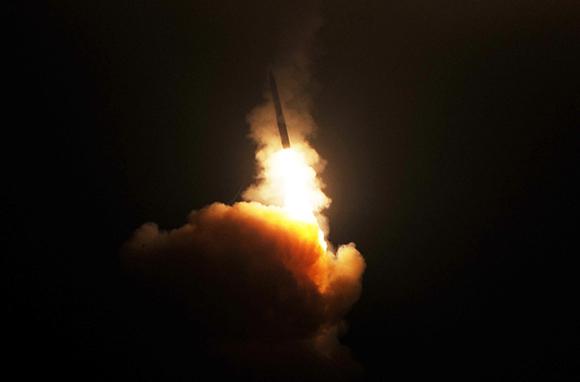"Iran? Let's not fool ourselves, they won't have an intercontinental ballistic missile for at least the next ten years. All the projections have been wrong, we should avoid continuing to install anti-missile defense systems in Europe and concentrate on the American West Coast ". This was stated by Admiral William Gortney, commander of the United States Northern Command during a congressional hearing last March, and reiterated a few hours ago publicly.
"Iran? At best, they will need another ten years. ”For many years, US intelligence officials have publicly considered Iran to be able to launch an intercontinental ballistic missile (ICBM) within the 2015. This prediction prompted Congress to propose the construction of a large strategic interception base on the east coast of the United States. Fears also confirmed by the current presidential candidates who (we are always in the electoral campaign) have abandoned themselves to hyperbolic statements with "Iran that would be able to strike New York and Los Angeles by next December".
The US military has revised that official estimate. It turns out that the potential Iranian intercontinental missile capacity has been significantly revised. This should prompt the Congress to reverse the amounts for missile defense programs in force in other projects. The estimate of the 2015, as the year in which the Iranians could have launched nuclear warheads against the US dates back to an unclassified analysis of the National Intelligence Estimate on foreign missile threats. In that document it was stated that "after North Korea, Iran would be the most hostile country able to test an ICBM by 2015". Note that this document dates back to the 1999. In the document, the American analysts estimated in fifteen years the time necessary for the development of an operative ICBM. Needless to say, these fears have been exploited by many American politicians to try to get exorbitant sums for long-range missile defense projects.
In the 1999, the NIE focused on the first flight test of a development program as a criterion for establishing the entry into service of an ICBM. And to say that the 29 last July, the Secretary of Defense Ashton Carter, reported to the Congress the new estimates, totally revised and projected at least to the 2025 / 2028. Carter's report which, strangely, was not noticed by most.
So why does the third phase of implementation of missile defense systems in Europe continue? We know that the first two phases, which involve surface defense systems and in Romania, were designed to counter Iranian short and medium-range missiles. The third phase, the distribution of high-speed interceptors in Poland, aims to combat long-range ballistic missiles from Iran. Failing the Iranian threat, the entry into service of the systems in Poland could fuel the suspicion that the shield is in defense of potential Russian and not Iranian missiles.
Admiral William Gortney concludes: "The Department of Defense should avoid continuing the construction of defensive structures on the East Coast, the Iranian threat having disappeared, and diverting missile defense resources to improve the strategic ground interceptors currently deployed on the West Coast ”.
The East Coast - concluded Gortney - does not deserve further implementations.












